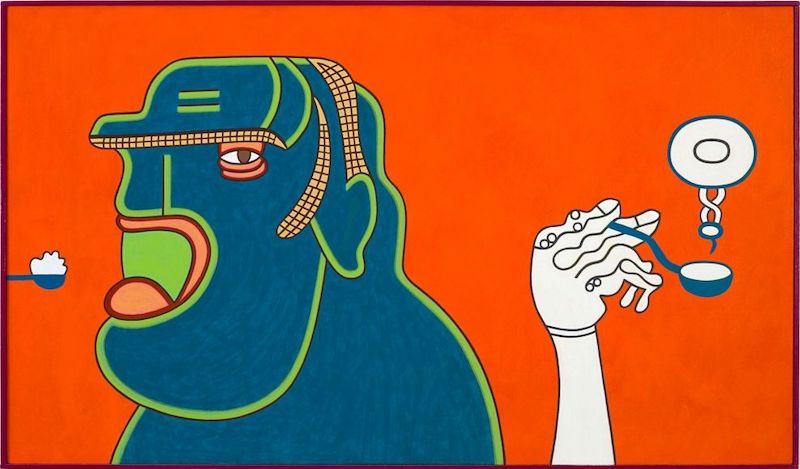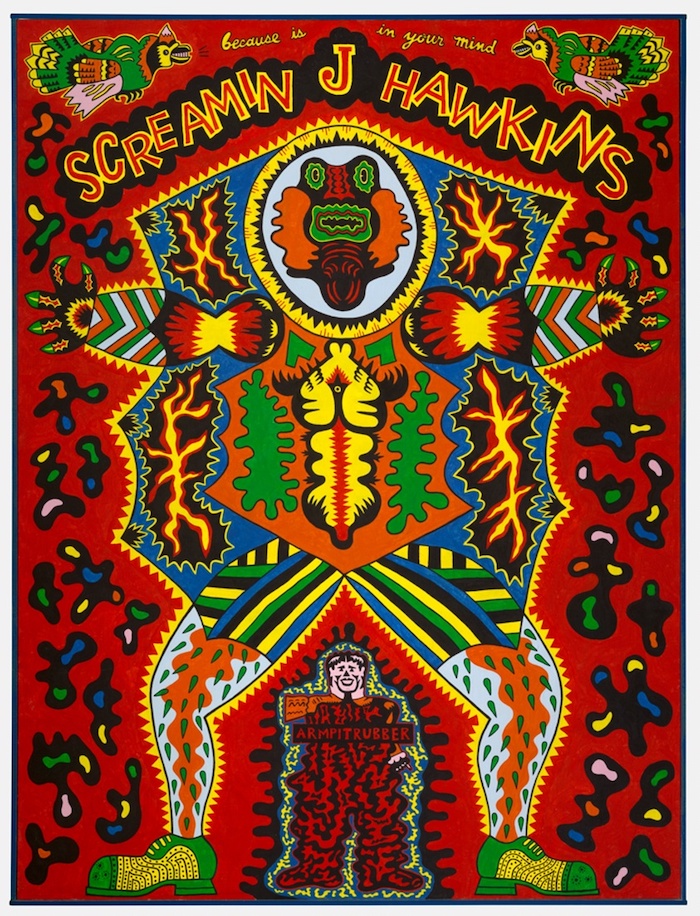Artist Insights: Karl Wirsum


By LAURA METTAM
CGN spent some time talking with Karl Wirsum about his long career as a Chicago artist and as a member of the famous Hairy Who artist group from the 1960s. He shared what sparked his artistic interest as a child, the multiple influences on his work throughout his life, and the advantages of looking forward, not back.
Chicgaoans may encounter legendary artist Karl Wirsum riding the El downtown, socializing at School of the Art Institute of Chicago events, attending gallery openings, or offering his point of view in a panel discussion. Wirsum is a familiar presence in our art community for several reasons, the most significant being the volume of his distinctive work that surrounds us in galleries, museum collections and public art.
At 71 Wirsum is still looking ahead and enjoying his life as an active artist. He recently had a solo show in New York for the first time in two decades, and he has a full schedule in Chicago; last fall during Chicago Artists Month the Chicago Department of Cultural Affairs presented this year's Ruth Horwich Award to Wirsum in recognition of his enduring career. Wirsum's work may be seen in the collections of major museums around the country, including the Art Institute of Chicago, the Museum of Contemporary Art, and the Whitney Museum of American Art in New York, where Wirsum also participated in the 1968 Whitney Biennale.
Roased in Chicago, Wirsum was hospitalized for a month when he was just a boy. To help his son with boredom during his long stay, Wirsum's father created a series of narrative images of elves, drawn in sequential situations that told a continuous story. The wonderful distraction influenced Wirsum's entire creative life. Not yet six years old at the time of his hospital stay, he began to create drawings of his own fantasies; eventually the doctor approached Wirsum's mother and suggested she enroll her son in free Saturday classes for children at the Art Institute. It was there that Wirsum benefitted from the museum's stimulating programs, a little creative homework, and the inspirational experience of being in a museum.
*

Wirsum became a member of the wild-child group the Hairy Who in the 1960s, after graduating from the School of the Art Institute in 1961. He reflects that within the group of artists, whose names we still recognize today, each had their own endeavors to pursue but together they brainstormed, installed works, designed and produced catalogues – the relationship was truly collaborative.
How the Hairy Who got its quizzical name is a long story, according to Wirsum. The artists working together at the time looked to music groups, as well as art historical periods, for catchy, yet mysterious name inspiration during an evening of brainstorming at the home of artists Jim Nutt and Gladys Nilsson. The name of the art critic Harry Bouras kept coming up all night. Bouras had a weekly radio program and the group found his pronouncements humorous. Continually referenced throughout the evening, and being the only person who was in the dark who Bouras was, when Wirsum's curiosity got the better of him, he blurted out, Harry who? The group responded, "That's it!" and the name stuck. Harry became Hairy, and the group's collective identity was solidified for good.
The Hairy Who's rise to prominence began in the late 1960s when Hyde Park Art Center (HPAC) organized several key exhibitions that introduced audiences to the vibrant young group. The first, entitled Hairy Who, presented works by six artists, including Wirsum, and set the tone for what was to come in future presentations at the Center. HPAC, and in particular its director, artist Don Baum, were critical to Wirsum's artistic development for a handful of happy years. Wirsum remembers being surrounded by creative friends and like-minded companions at the time. Working individually towards a collective artistic mission was radical, and it was a sociable departure from the classic scenario of the isolated artist.
A close friend of Wirsum's was his contemporary, Ed Paschke. He describes their time together "like working on a comedy routine." In 1961 Wirsum, Paschke and Burt Phillips ventured to Mexico after Paschke and Phillips won travel fellowships. They picked Mexico because it was a country next-door to the United States, meaning they could get there by bus, and Phillips knew a woman who needed house sitters for an extended stay.
The country's ancient arts, as well as folk traditions and styles, plus pervasive public murals, captivated Wirsum. Paschke and Phillips stayed for two months. Wirsum was there for nearly six. Inspired by the area's mural works, Wirsum covered the house owner's walls while she was away. She returned to Mexico to find Wirsum still in residence, and she was (luckily) delighted by her new, colorful surroundings. The characteristics of Mexico's street and indigenous art stayed with Wirsum; vivid palettes, energetic, bold lines and an emphasis on the figurative are qualities viewers recognize as distinctly his today.
Humor plays a prominent role in Wirsum's work as well. Viewers see figures that have exaggerated, comic-like features, neon colors, and loud personalities, living in worlds of wonder and imagination. Aggressive lines and whimsical shapes disrupt any surrounding seriousness.
Wirsum's creative perspective may emanate from a darker place, but he explains that in his art he turns ideas around and presents them with a humorous note. He says he doesn't use humor for humor's sake; instead he takes something common, like a jack-o-lantern, and tries to achieve a certain gaiety in his representation, while also playing up its strange associations.
Wirsum has had relationships with two galleries in all this time. He exhibited at Phyllis Kind Gallery for years, and then in 1998 he began showing with Jean Albano Gallery in River North. Of working with Jean Wirsum says, "She has a high level of integrity, and she's worked hard on my behalf. Overall between galleries and artists, it's all about human relationships."
Wirsum's enthusiasm for his work has not diminished over time, but he also doesn't put stock in looking back. "I do not dwell on self-reflection. I prefer to look forward." He says his approach to his work has been a "continuum of refinement" rather than a search for breakthrough moments. Though he likes to collaborate, he ultimately prefers to work alone. Wirsum explains he knows his time is limited, and he wants to make the most of it.






